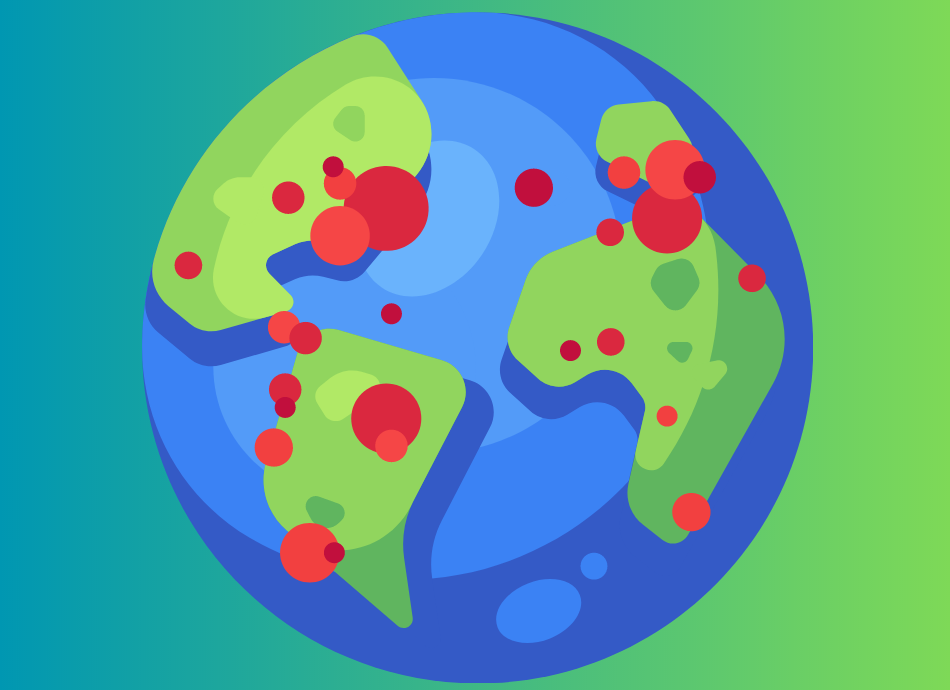Outbreaks, epidemics and pandemics
Key points about outbreaks and epidemics
- Outbreaks and epidemics are basically the same things. They are terms used to describe a situation where there are more cases of a disease or health condition than expected.
- A single case of a contagious disease can be considered an outbreak. Examples are when it's an unknown or rare disease, is new to a community or has been absent from a population for a long time.
- The term pandemic relates to geographic spread. It's is used to describe an epidemic that has spread across a large region, eg, multiple continents or even worldwide.

- What are outbreaks and epidemics? What is the difference between an epidemic and a pandemic? What can I do to protect myself?
- While the terms may suggest that there is a specific threshold by which an event is declared an outbreak, epidemic or pandemic, the distinction is often blurred.
- Outbreaks and epidemics are basically the same things. They are terms used to describe a situation where there are more cases of a disease or health condition than expected.
- Sometimes a single case of a contagious disease is considered an outbreak. This may be true if it is an unknown or rare disease, is new to a community or has been absent from a population for a long time.
- The term pandemic relates to geographic spread. It is used to describe an epidemic that has spread across a large region, eg, multiple continents or even worldwide.
- Pandemic is not a word to use lightly or carelessly, as it can cause unreasonable fear. It implies the need for international cooperation to help reduce the spread of the disease and control the outbreak.
The severity of an outbreak or epidemic depends on factors such as the following:
- The size of the population – a disease may be easily contained within a small isolated community.
- The age and health of the population – older and younger people and those with compromised immune systems are more at risk of serious illness.
- Whether the disease can be vaccinated against and, if so, the proportion of the population that has been vaccinated. The more people who are vaccinated the less rapidly a disease can spread – this is known as herd immunity.
- The speed and ease of travel – when people move from place to place they can bring diseases with them.
It may be described in terms of:
- the morbidity rate – how many people become ill as a result of the disease
- the mortality rate – how many people die from the disease.
You will commonly hear the terms outbreak and epidemic used in the media.
In New Zealand, the word outbreak is sometimes used when the situation is confined to a particular region, eg, “the number of confirmed cases in the Canterbury measles outbreak has risen to 39”.
If the outbreak has affected more than one region, or has a nationwide impact, the word epidemic is sometimes used, eg, “few New Zealanders had been vaccinated when a measles epidemic erupted in 1991, infecting 40,000–60,000 people and killing seven”.
The term epidemic is not only used to describe widespread outbreaks of infectious diseases. You may also hear it being used to describe abnormally high levels of other health conditions, such as heart disease, diabetes and obesity, eg, “With obesity rates soaring, early targeting of at-risk patients could help stem the growing diabetes epidemic”.
If an infectious disease spreads from one country to another and becomes prevalent around the world it may be described as a pandemic, eg, “The Spanish Flu pandemic of 1918 is estimated to have killed as many as 60 million people worldwide. In just over one month it claimed the lives of 9000 New Zealanders”.
Disease outbreaks are often related to illness spread from person to person, or contaminated food or water. Every year, hundreds of people in New Zealand become unwell due to disease outbreaks, many of which are preventable. Use the following tips to help keep you and your whānau safe:
- Make sure your vaccinations are up to date.
- Wash your hands often with soap and water. If these are not available, use an alcohol-based hand cleaner or gel sanitiser. If using a gel, rub your hands until they become dry.
- Avoid touching your mouth, nose or eyes with your hands unless you've just washed your hands.
- When you cough or sneeze, cover your mouth and nose with a tissue. Then throw the tissue in the rubbish. Wash your hands afterwards.
- Avoid crowded places where possible if an illness is known to spread from person to person.
- Stay home if you show signs of illness.
- Ensure your drinking water is safe to drink and follow our food safety tips.
Vaccine-preventable diseases(external link) Immune, IMAC, NZ
Epidemics, pandemics and outbreaks(external link) WedMD, US
A timeline of epidemics in NZ, 1817–2009(external link) Te Ara, NZ
Pandemics(external link) Ministry of Health, NZ
What is the difference between a pandemic and an epidemic?(external link) Very Well Health, US
Credits: Healthify editorial team. Healthify is brought to you by Health Navigator Charitable Trust.
Reviewed by: Dr Jonathan Kennedy, GP & Senior Lecturer
Last reviewed:
Page last updated:





